|
Projects/Exhibitions
Living & Design Osaka , September 2009
 I was invited to participate at the furniturefair Living & Design by the Japanese designer Reiko Sakai. I exhibit the floorlamp Handsfree and the small bedshelf Madrid 4+1
I was invited to participate at the furniturefair Living & Design by the Japanese designer Reiko Sakai. I exhibit the floorlamp Handsfree and the small bedshelf Madrid 4+1
Mould/Design Centre Malmoe, from 30 January - 8 Mars 2009
Edsviks art gallery, Sollentuna, from 9 -31 May 2009
Steneby art gallery, Dals Långed, from 2 - 24 September 2009
Sundsvalls museum, from 3 Oktober -15 November 2009
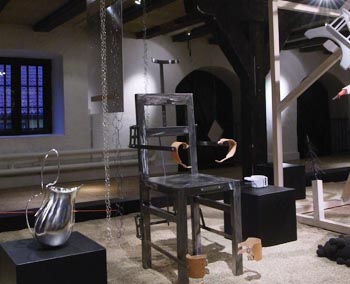 During 2009 I had the opportunity to participate at this travelling exhibition in Sweden called "Tingens talan i teoriernas tid" with the chair "Activity chair for apathetic refugee children". The exhibiton was realized by Sveriges Konstföreningar.
During 2009 I had the opportunity to participate at this travelling exhibition in Sweden called "Tingens talan i teoriernas tid" with the chair "Activity chair for apathetic refugee children". The exhibiton was realized by Sveriges Konstföreningar.
Melbourne Exhibition Centre, VIVID BIG + BOLD 2008
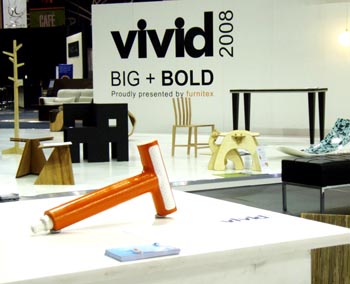 During 16 to 19 of July 2008 I had the opportunity to participate at this Australian fair with my product FLOW orange.
During 16 to 19 of July 2008 I had the opportunity to participate at this Australian fair with my product FLOW orange.
Watch all FLOW!
Stockholm Furniturefair 2006
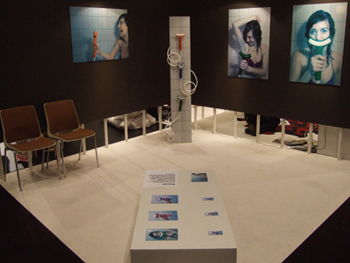 From 8 to 12 of February 2006 I took part in the Stockholm Furniturefair Greenhouse area.
From 8 to 12 of February 2006 I took part in the Stockholm Furniturefair Greenhouse area.
Watch products!
Australian International Furniture Fair, The Edge 8-12 February 2006
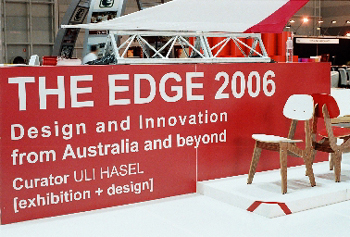
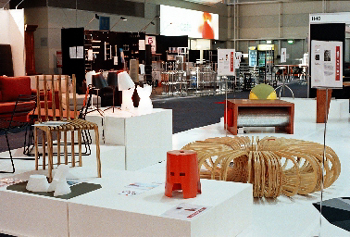
During February 2006 I had the opportunity to participate at this Australian fair with my product Happy; stool for children to both sit, stand and play with.
Click on image on right page and you will find more information and also a short movie where you can see children interact with the stool.
Mould/Design Centre Malmö, Conceptual Design 28 October 2005 – 8 January 2006
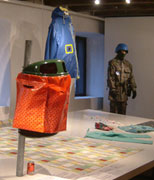
More information about exhibition
During September 2005 I got invited to participate at this workshop arranged by Mould/Design Centre in Malmö along with Malmö college (K3)
DESIGN, DEMOCRACY, DRAMA (DDD) - an information activity around design research.
DDD is a research project with the aim to increase the knowledge about
contemporary design research. The objective is to disseminate research and research results to a
broader general public, to reach people also outside the university or the exhibition room.
DDD is organized during the period September to December 2005 of mould/design centre in Malmö
along with Malmö college, art, culture and communication (K3).
Swedish Nationalmuseum

Conceptual Design 28 April – 2 October
Survival coat for the homeless
To some people the designing of clothes for the homeless
may seem the wrong way of dealing with their problems. Nevertheless, it
is perhaps the only practical opproach to this issue. What if this is in
fact the only help we have to offer in an increasing mechanized society
where more and more care is being made more efficient, but less human?
The survival coat is my way of focusing on homelesness and rising vital
questions about its underlaying causes.
More information about exhibition
Tokyo style in Stockholm 2004

T-shirt exhibition at Konstfack (swedish college for art & design)
Our environment becomes increasingly contaminated with all types of radiation.
Soon the only thing that do not radiate dangerous beams will be our own bodies.
I wanted to translate these thoughts to a symbol that on a clear and positive way communicated this. I call it Good Wave Area.
Look at more T-shirts from the exhibition!
Stockholm Furniturefair 2004
From 4 to 8 of February 2004 I took part in the Stockholm Furniturefair Greenhouse area with the following products.

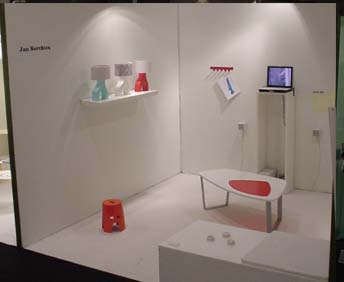

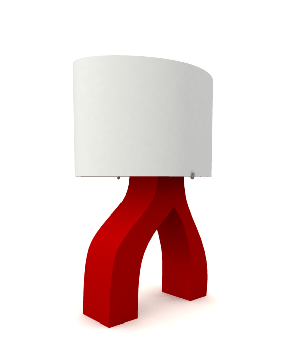
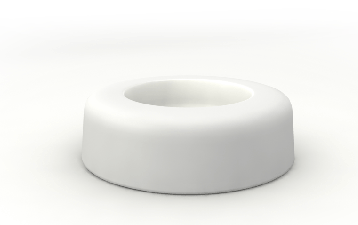
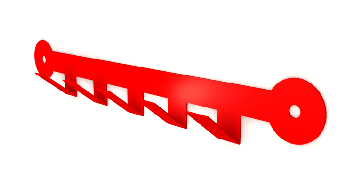
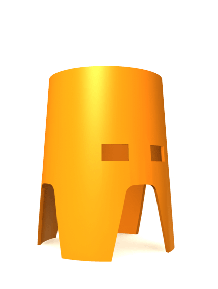
The "S" project
A project between me and the Swedish artist Veine Johansson.
Veine made three sculptures for the subwaystation Axelsberg back in the 80´s.
During my mornings on my way to work I often found my self standing and looking at
one sculpture that is made as the letter S. I´ve got inspired to make a copy and place
it in a playground in the neighbourhood so that the kids could go skateboarding and rollerskating on it.
The project has been under development now for one year and its progressing slowly but firm.
Hopefully we can make this little dream com thrue not to far in the future.
Pictures
Memories
Purpose:
To promote integration by illustrating our similarities.
Idea background:
We have to light up our similarities on a higher level rather
than focusing on our differences as we often tend to do.
Many refugees arrive in Sweden today with a "suitcase" filled of
tragic and sad experiences. In many cases it is war, torture, physical
abuse and rape that make these people come here. Not very many of us
understand the memories these people are carrying and therefore, can be
hard for us to relate. Underneath the memories, clothes, languages, skin
colors, cultural differences etc. we can bring to light how much alike we are.
By doing this I think we can come closer to each other and integrate ourselves.
The Idea:
We all have similar memories. These memories help us get by when things are rough;
warm arms, a pair of loving eyes, a comforting hand, a calming voice, a mother baking in the kitchen,
a father coming home from work, a relative that was special to you, or a neighbor that reached out his
helping hand. These feelings are what we should bring to light; our positive memories and the positive
things in our childhood. We all have something we want to remember, let us talk about this to understand
how alike we really are, even though we speak different languages and practice different religions.
When we are able to see a woman in a veil telling a story about how her grandmother used to brad her
hair or how her father used to sing to her before she fell asleep, we may be able to relate this to our
own positive memories. If this is accomplished, then we have created, or rather brought to light,
something that unites us.
Role models
Purpose:
Give teenagers good role models
Background:
We come across young people everywhere that grow up without proper role models. Unfortunately,
we already know what this leads to in many cases. Suitable role models do exist of course, but
everyone is not always fortunate enough to get to know them. I asked myself how you could "show"
these role models to such teenagers. How can we give these teenagers alternative role models to
the stereotyped role models that they have to chose from today such as; movie stars, pop stars,
photo models, etc.?
How:
A touring photo exhibition, spontaneously, felt like a good alternative. The exhibition could work
as a catalyst for other activities such as lectures, workshops, networking, etc.
The photo exhibition will be based on portrait photographs of elected role models. The current idea
is that these role models will be photographed in their working environment, whether it is a pizza
maker, a subway car driver, a mechanic, a hairdresser, social worker etc. Accompanying the photographs
will be text, which may include the following role model testimonials:
1. What their current jobs are, their heritage etc.
2. How their upbringing was.
3. What it was that made them get out of a negative or destructive behavior
(drug/alcohol abuse, criminality, violence within the home, gang activities,
physical abuse, etc.) and include some before and after talk.
4. If they had a role model and what that person meant to them.
5. If they were missing a role model (equally as interesting) and
what they think having one could have helped them with.
6. A positive message they would like to give to our teenagers.
To get the teenagers to identify themselves or look up to these presented role
models (to get the message to reach them), I think it is important that there
is a common denominator throughout the participants. For example, the common
denominators could be nationality, social background etc. Preferably,
it should be people that had it rough themselves growing up and that were pulled
out of a destructive behavior because of a role model and/or their own positive will.
Maybe it is a good idea to showcase people with a job that teenagers feel attracted towards.
It can be easier to look up to someone who made it by being a police officer or pilot rather
than a subway car driver?
|
 I was invited to participate at the furniturefair Living & Design by the Japanese designer Reiko Sakai. I exhibit the floorlamp
I was invited to participate at the furniturefair Living & Design by the Japanese designer Reiko Sakai. I exhibit the floorlamp  During 2009 I had the opportunity to participate at this travelling exhibition in Sweden called "Tingens talan i teoriernas tid" with the chair "Activity chair for apathetic refugee children". The exhibiton was realized by Sveriges Konstföreningar.
During 2009 I had the opportunity to participate at this travelling exhibition in Sweden called "Tingens talan i teoriernas tid" with the chair "Activity chair for apathetic refugee children". The exhibiton was realized by Sveriges Konstföreningar.
 During 16 to 19 of July 2008 I had the opportunity to participate at this Australian fair with my product FLOW orange.
During 16 to 19 of July 2008 I had the opportunity to participate at this Australian fair with my product FLOW orange.
 From 8 to 12 of February 2006 I took part in the Stockholm Furniturefair Greenhouse area.
From 8 to 12 of February 2006 I took part in the Stockholm Furniturefair Greenhouse area.











